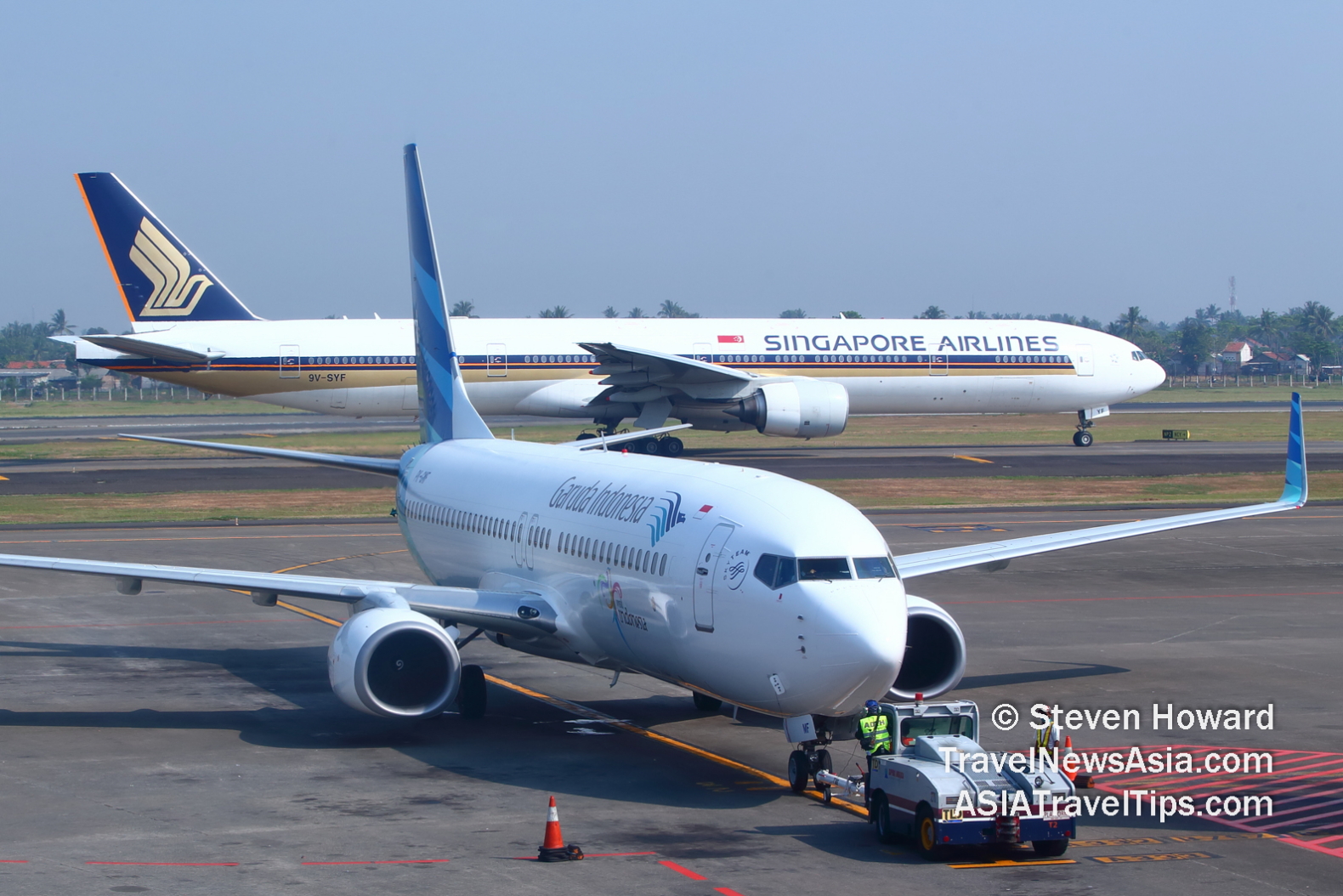|
(28 Jan 2022)
Preliminary traffic results from the Association
of Asia Pacific Airlines (AAPA) for the full
calendar year 2021 show continued decimation in
international air passenger demand for the region�s airlines, as
tight border restrictions implemented in response to the prolonged
COVID19 pandemic dashed hopes of recovery in air travel markets.
Overall, the 16.7 million international passengers
carried in 2021 represent just 4.4% of the volumes
recorded in pre-pandemic 2019, whilst offered seat capacity
averaged 13.8% of the levels registered in 2019.
For the full
year, the international passenger load factor was a paltry 32%,
underscoring the ongoing challenging conditions faced by the
region�s airlines in the passenger sector.

Garuda Indonesia and Singapore Airlines at CGK. Picture by Steven Howard of TravelNewsAsia.com
Mr. Subhas Menon, AAPA
Director General, said, �For a second year running international
passenger travel remained severely suppressed, as a result of
strict border measures imposed throughout the region and
elsewhere. It is the worst crisis the region�s airlines have ever
faced in terms of duration and depth.�
�As vaccination programmes got under way, some
governments began to ease travel restrictions in the later part of
the year, supporting some improvement in the number of
international passengers carried in December to 7.6% of 2019
volumes. However, the emergence of the Omicron variant has put the
brakes on recovery.�
In contrast to passenger traffic, international air cargo markets
saw encouraging growth over the course of the year. With major
manufacturing hubs located in the region, Asia Pacific airlines
benefitted from buoyant export demand for consumer and
intermediate goods. In addition, supply chain bottlenecks at
container shipping ports boosted demand for shipments by air.
For the full year 2021, international air cargo
demand as measured in freight tonne kilometres (FTK) registered a
robust 20.1% year-on-year increase, after posting a 15.4% annual
decline in the year 2020 when the widening spread of the COVID19
pandemic severely curbed economic growth across the world.
Compared to the growth in demand, offered freight
capacity expanded at a markedly slower pace of 8.1% in 2021, as
the drastically reduced international passenger operations
adversely affected belly-hold cargo capacity, although this was
partly mitigated by the deployment of cargo-only passenger flights
and increased freighter operations. As a result, the international
freight load factor climbed 7.4 percentage points to 74.3%, the
highest annual average on record.
�The air cargo business segment has been
a silver lining for the aviation industry, with strong demand
helping to partially mitigate the loss in passenger revenue. In
FTK terms, international air cargo demand for the year 2021 has
recovered to just above pre-crisis levels,� Mr. Menon added. �Overall, whilst 2021 will
be remembered as one of the most challenging years for the
region�s airlines, it has also demonstrated the industry�s
extraordinary resilience as airlines continue to play a vital role
in connecting people and transporting essential goods across the
world. For meaningful recovery to take place, border restrictions
would need to be eased on a consistent basis, and the current
multi-layered travel requirements streamlined and simplified for
travellers. Collaboration among aviation stakeholders and
governments is key to the safe and sustained resumption of air
travel.�
|
Headlines: |
|
|
